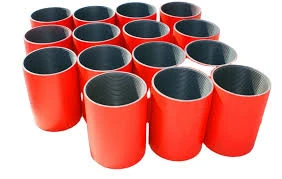- Afrikaans
- Albanian
- Amharic
- Arabic
- Armenian
- Azerbaijani
- Basque
- Belarusian
- Bengali
- Bosnian
- Bulgarian
- Catalan
- Cebuano
- Corsican
- Croatian
- Czech
- Danish
- Dutch
- English
- Esperanto
- Estonian
- Finnish
- French
- Frisian
- Galician
- Georgian
- German
- Greek
- Gujarati
- Haitian Creole
- hausa
- hawaiian
- Hebrew
- Hindi
- Miao
- Hungarian
- Icelandic
- igbo
- Indonesian
- irish
- Italian
- Japanese
- Javanese
- Kannada
- kazakh
- Khmer
- Rwandese
- Korean
- Kurdish
- Kyrgyz
- Lao
- Latin
- Latvian
- Lithuanian
- Luxembourgish
- Macedonian
- Malgashi
- Malay
- Malayalam
- Maltese
- Maori
- Marathi
- Mongolian
- Myanmar
- Nepali
- Norwegian
- Norwegian
- Occitan
- Pashto
- Persian
- Polish
- Portuguese
- Punjabi
- Romanian
- Russian
- Samoan
- Scottish Gaelic
- Serbian
- Sesotho
- Shona
- Sindhi
- Sinhala
- Slovak
- Slovenian
- Somali
- Spanish
- Sundanese
- Swahili
- Swedish
- Tagalog
- Tajik
- Tamil
- Tatar
- Telugu
- Thai
- Turkish
- Turkmen
- Ukrainian
- Urdu
- Uighur
- Uzbek
- Vietnamese
- Welsh
- Bantu
- Yiddish
- Yoruba
- Zulu
metric pipe couplings
Understanding Metric Pipe Couplings A Comprehensive Guide
In the realm of plumbing and piping systems, one of the critical components is the pipe coupling. These fittings play an essential role in connecting two pipes together, allowing for the efficient flow of liquids and gases. Among the various types of pipe couplings, metric pipe couplings are particularly notable due to their widespread use in industries and applications that require precise measurements and compatibility with metric systems.
What are Metric Pipe Couplings?
Metric pipe couplings are specialized fittings designed specifically for pipes measured in millimeters rather than the traditional imperial units. They are essential when working in metric countries or within applications that adhere to International Organization for Standardization (ISO) guidelines. These couplings are available in various materials, including stainless steel, brass, and plastic, making them suitable for a wide range of environments, from residential plumbing to heavy industrial applications.
Types of Metric Pipe Couplings
1. Straight Couplings These are the simplest form of pipe couplings, allowing for the connection of two straight pipes with the same diameter. They are easy to install and are commonly used in various plumbing applications.
2. Reducing Couplings When connecting pipes of different diameters, reducing couplings are employed. They facilitate a smooth transition between pipes of varying sizes, ensuring efficient flow and minimal pressure loss.
3. Elbow Couplings These couplings come with an angle that allows for directional changes in piping systems. Elbow couplings are vital in creating bends in the flow of liquid or gas without compromising structural integrity.
4. Tee Couplings Tee couplings enable the branching of piping systems into three directions, making them ideal for setups that require the division of flow.
metric pipe couplings

5. Union Couplings These provide a detachable connection between two pipes, allowing for easy maintenance and replacement without the need to cut the pipes.
Advantages of Using Metric Pipe Couplings
One of the primary benefits of metric pipe couplings is their compatibility with various piping systems. Since many global industries have adopted metric measurements, using these couplings ensures that components fit seamlessly without the risk of leaks or failures. Furthermore, metric couplings often exhibit higher precision, leading to improved performance in terms of pressure retention and durability.
Additionally, the availability of metric pipe couplings in different materials means that users can select the most suitable option based on specific environmental conditions, such as corrosion resistance or temperature fluctuations.
Application Areas
Metric pipe couplings find applications in numerous fields, including
- Water Supply Systems Connecting pipes for residential or municipal water supply. - Industrial Process Piping Used in factories and processing plants to manage the flow of chemicals and other materials. - HVAC Systems Employed in heating, ventilation, and air conditioning systems to connect ductwork and piping. - Automotive Applications Used in various fluid transfer systems within vehicles.
Conclusion
In conclusion, metric pipe couplings are indispensable components in modern piping systems, offering flexibility, durability, and efficiency. Whether for residential plumbing or large-scale industrial applications, understanding the types and benefits of these couplings can significantly enhance the design and functionality of piping systems. As industries continue to evolve towards more standardized measurements, the importance of metric pipe couplings will undoubtedly increase, making them a crucial consideration for engineers and contractors alike.
-
Tubing Pup Joints: Essential Components for Oil and Gas OperationsNewsJul.10,2025
-
Pup Joints: Essential Components for Reliable Drilling OperationsNewsJul.10,2025
-
Pipe Couplings: Connecting Your World EfficientlyNewsJul.10,2025
-
Mastering Oilfield Operations with Quality Tubing and CasingNewsJul.10,2025
-
High-Quality Casing Couplings for Every NeedNewsJul.10,2025
-
Boost Your Drilling Efficiency with Premium Crossover Tools & Seating NipplesNewsJul.10,2025







